INCENSE
bringing fragrance into the home
Diana Rosen
The mission of Storey Publishing is to serve our customers by publishing practical information that encourages personal independence in harmony with the environment.
Edited by Deborah Balmuth and Carey Boucher
Cover design by Wendy Palitz
Cover illustrations by Alexandra Eckhardt
Text design and production by Susan Bernier
Copyright 2002 by Storey Publishing, LLC
All rights reserved. No part of this book may be reproduced without written permission from the publisher, except by a reviewer who may quote brief passages or reproduce illustrations in a review with appropriate credits; nor may any part of this book be reproduced, stored in a retrieval system, or transmitted in any form or by any means electronic, mechanical, photocopying, recording, or other without written permission from the publisher.
The information in this book is true and complete to the best of our knowledge. All recommendations are made without guarantee on the part of the author or Storey Publishing. The author and publisher disclaim any liability in connection with the use of this information. For additional information, please contact Storey Books, 210 MASS MoCA Way, North Adams, MA 01247.
Storey Books are available for special premium and promotional uses and for customized editions. For further information, please call Storeys Custom Publishing Department at 1-800-793-9396.
Printed in Hong Kong by Lake Book
10 9 8 7 6 5 4 3 2 1
Why Incense?
One can travel through every country in the world; experience every ceremony, tradition, and cultural celebration; and arrive at one incredible conclusion: All the world loves incense.
What makes this combination of tree resin and powdered aromatic essence so popular? Why has every major religion embraced it? Why has its popularity never waned in thousands of years?
Perhaps the powerful scent of incense truly does purify the mind, body, and spirit; the almost magical healing properties of herbs, flowers, trees, and grasses have been known for millennia. Or perhaps the importance of incense truly is in its blue-tinged smoke wafting up toward the heavens, carrying with it our prayers, hopes, and dreams to The One Who Hears Us.
Incense is a conduit from the past to the present. We can light incense with the very same scents that greeted the Christ child: frankincense and myrrh. Or we can use the same aromatic cinnamon, clove, and rose that joined the lovers in the biblical tale Song of Solomon. The ceremonies using sage and sweetgrass that brought peace and tranquility to Native Americans are ours to duplicate, as is the soft scent of sandalwood that has accompanied meditation by Buddhist monks from India through the Far East for many centuries.
After more than six thousand years, lighting incense is still a ritual tool for prayer, but more and more incense finds its way into rituals for solo pleasures and serves as an invitation for hospitality and as a functional element to repel insects, air out a stuffy room, or rid a new home of any negative energy left by the previous owners.
Incense connects us to the past, lightens our present, and guides us to decisions for the future. Turn the page to learn just a few of the ways you can bring the scents and pleasures of incense into your life today.
A Little History of Incense
The word incense is derived from the French word encens or encensen, which came from the Latin incensus (to cause a passion or emotion to become aroused). Incense is almost as old as fire itself. When humans discovered that striking one flint against another or rubbing one dried twig against another could send off sparks, they found the power of fire. Its flames warmed them against the cold of a damp or wintry day; its steady heat provided the first choice between raw and cooked foods; and its brilliant orange/yellow light illuminated the black of night. What could be more exciting than fire?
They soon learned the answer. When fragrant apple-wood or cherrywood, pine cones, or lemongrass and other herbs were added to the embers of their new fires, the scent was changed, as if by magic. In just minutes, talk ceased and a relaxed aura enveloped all. The power of fragrance lifted the spirits as it calmed bodies. Incense was discovered.
 The Ten Virtues of Incense
The Ten Virtues of Incense
In the sixth century, a Japanese monk wrote out what he and his brothers believed to be the ten virtues of incense. They are as true today as they were fifteen centuries ago.
- Incense brings communication with the transcendent.
- Incense purifies mind and body.
- Incense removes uncleanliness.
- Incense brings alertness.
- Incense is a companion to solitude.
- In the midst of activity, incense brings a moment of peace.
- When there is plenty, one never tires of incense.
- When there is little, still one is satisfied.
- Age does not change the efficacy of incense.
- Used every day, incense does no harm.
That primitive yet eternally simple form of incense soon evolved into more specific or more elaborate combinations of fragrant resins (the sap-like residue from trees) with powdered fragrance made from the essence of tree barks, herbs or spices, grasses, fruits, vegetables, and flowers. They were formed into shapes and styles that are still casting their fragrant shadows.
Types, Shapes, Forms
Incense is made into one of two basic types: combustible or noncombustible. The combustible type (the one that catches on fire) is the one we are most familiar with. Its most common form is a stick coated with fragrant powder.
Combustible Incense
Among the many styles and shapes of combustible incense are:
 Joss sticks powdered incense extruded into fragile sticks, without any inner support
Joss sticks powdered incense extruded into fragile sticks, without any inner support
 Wands powdered incense formed over sticks or wands for strength and support
Wands powdered incense formed over sticks or wands for strength and support
 Powdered incense shaped into molds that depict whimsical or artistic designs, including flowers, bells, teacups, squares, and more
Powdered incense shaped into molds that depict whimsical or artistic designs, including flowers, bells, teacups, squares, and more
 Powdered incense extruded into traditional A-shaped spirals, which are hung on hooks to burn, or flat coils that are inserted into coil rings to burn
Powdered incense extruded into traditional A-shaped spirals, which are hung on hooks to burn, or flat coils that are inserted into coil rings to burn
 Powdered incense molded into small 1 to 2 cones
Powdered incense molded into small 1 to 2 cones
 Powdered incense saturated onto pieces of rope, an incense style unique to the Himalayas in India.
Powdered incense saturated onto pieces of rope, an incense style unique to the Himalayas in India.
Each of these styles of combustible incense emits a fragrant smoke redolent of the fruit, tree, herb, or vegetation that scents it. Todays powdered incense is as traditional as yesterday in its many forms and as innovative as tomorrow with its eclectic and intriguing choices of scents more than 250! Strawberry-kiwi, anyone?
Another type of combustible incense is the bundle or smudge stick. To make a bundle, grasses or herbs are bundled together and allowed to dry before they are lit for purification ceremonies, particularly by Native Americans. Smudge sticks are bundles charred at one end and lightly rubbed or smudged on people or places to purify and cleanse. An abalone shell is held in one hand to catch the ashes, and the other hand uses the bundle or smudge stick to scent the air. The custom is to carry a burning bundle from room to room to purify a house or to wave the bundle around ones body as an act of self-purification. Both bundles and smudge sticks are made from dried herbs, especially sage, sweetgrass, cedar, pinion, and lavender.


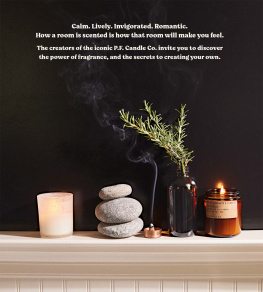
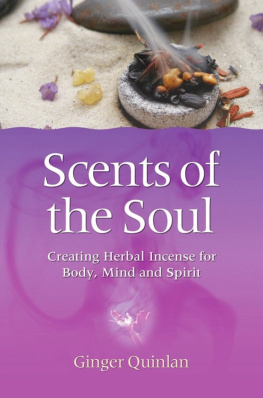
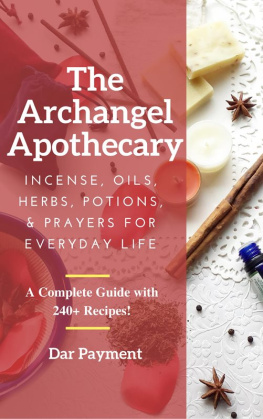
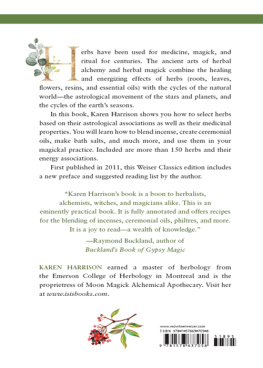

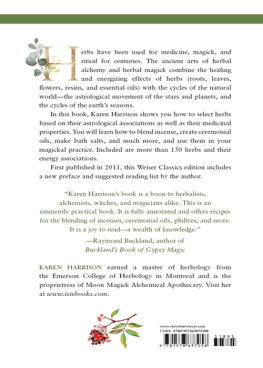
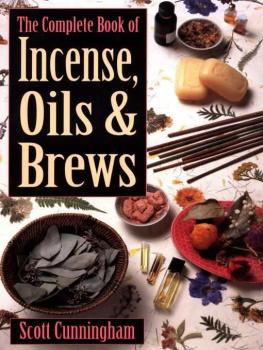
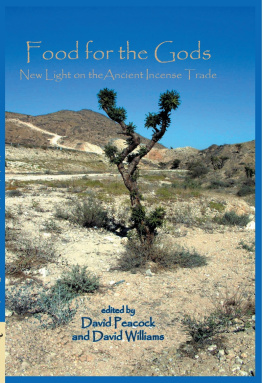
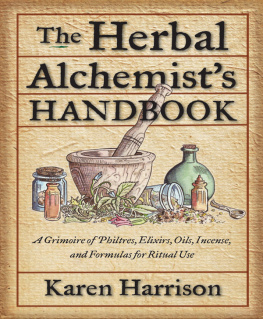

 The Ten Virtues of Incense
The Ten Virtues of Incense Joss sticks powdered incense extruded into fragile sticks, without any inner support
Joss sticks powdered incense extruded into fragile sticks, without any inner support